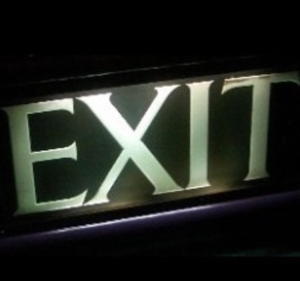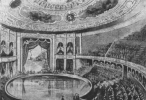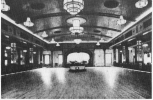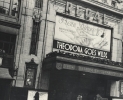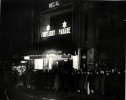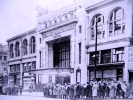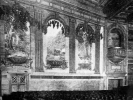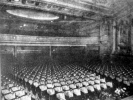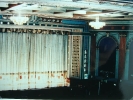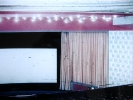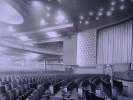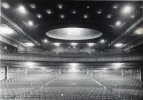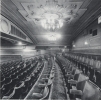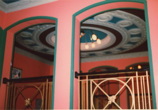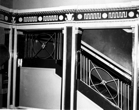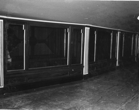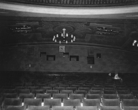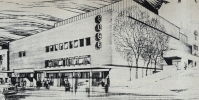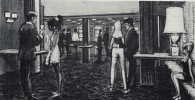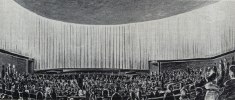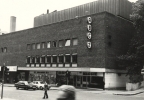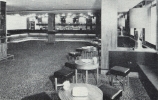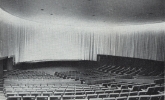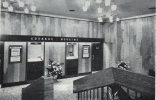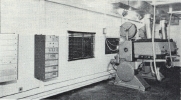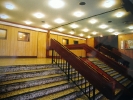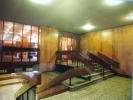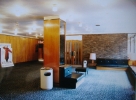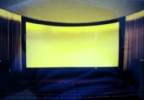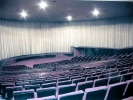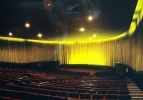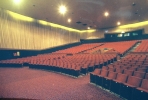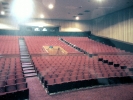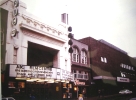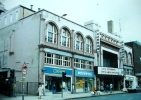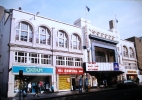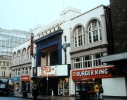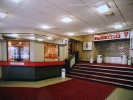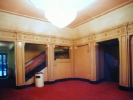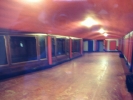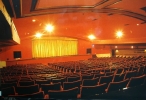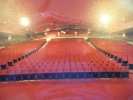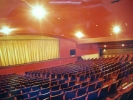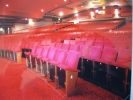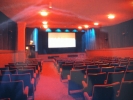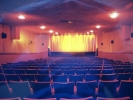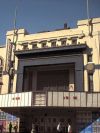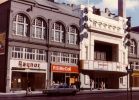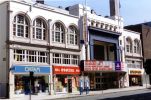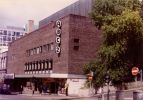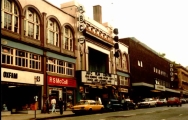Scottish Cinemas and Theatres
286 - 326 Sauchiehall Street
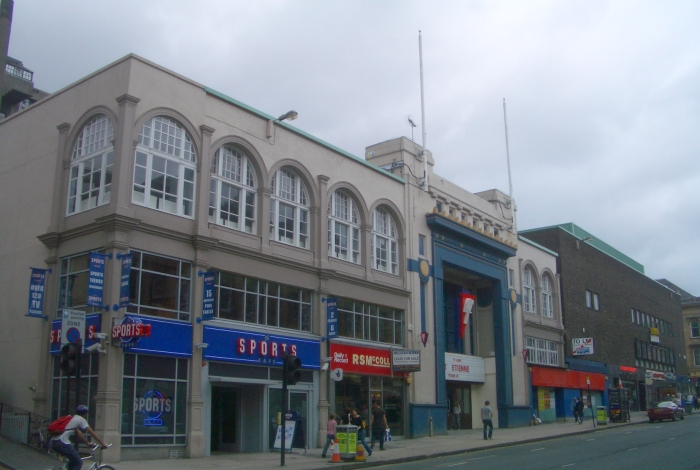
|
The Regal opened in November 1929 as ABC's flagship cinema in Glasgow. Designed by CJ McNair, the 2,359-seater was a thorough conversion and extension of a much older building, with a rather complex history. Originally built in 1875 as the Diorama, featuring canvases of historic events, then the Panorama in 1878, where the images were animated by having the canvases scroll, then Hubner's Ice-Skating Palace in 1885.
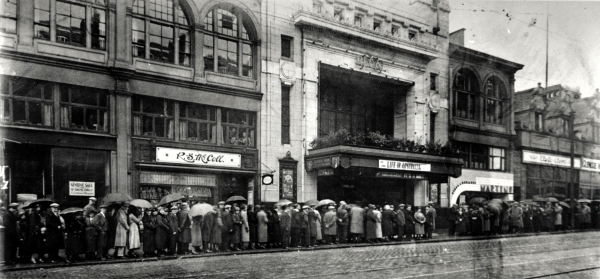 Photo: Scottish Screen Archive [SSA]
McNair's plans of 1929 clearly show that much of the fabric of the building was retained from its previous incarnation, including much of the roof structure and the unusual arrangement of having the main auditorium upstairs above a car park - a neccessity given the steep slope of Scott Street rising up from Sauchiehall Street. The mezzanine level of the dance hall became the stalls floor of the cinema. He replaced two of the arched window bays with a new landmark portico entrance, set off centre, and flanked on either side by shop units.
The small ground-floor foyer had payboxes on either side, and the luxurious main foyer waiting and cafe spaces above were reached by twin staircases, or one of two lifts. The huge auditorium sat 2,359 in stalls and balcony, decorated in autumnal colours, with three arches bays on the splay walls, each decorated with painted landscape scenes (much like his similar interior scheme at Hamilton). A giant cupula above the balcony was lit by concealed lighting.
There was a 3/12 Compton organ; images of it and organist Gerald Shaw c.1938 can be seen here and here, courtesy of Frank Watson and the Scottish Cinema Organ Trust. The interior was modernised in 1955, with a wide-screen fitted, and the side-wall decoration simplified, with a pink, silver and turquiose colour scheme.
The main building was renamed the ABC1 in October 1967, when a large extension housing a second screen was erected alongside (imaginatively entitled ABC2). This had 922 seats on a single level in stadium style, with a deeply curved screen and full 70mm facilities. It was the first new cinema to open in Scotland since the war, and was designed to feature the latest modern designs and fully licensed bar by Leslie Norton and CJ Foster. Kine Weekly reported the opening of the £250,000 building as being "one of the biggest showmanship events in Glasgow's history."
From a new entrance on Sauchiehall Street, patrons entered a foyer at
ground level, containing a pay box and sales kiosk, then ascended a
wide double staircase on the right, passing the advance booking hall to
the first floor waiting lounge and licensed bar. A vomitory led from
here to the centre of the massive auditorium, which had a screen size
of 50ft by 23ft, wall-to-wall gold curtains and comfortable red seats.
Photos courtesy of Bruce Peter and Scott McCutcheon, taken c.1996
The cinemas changed owners and names numerous times, to Cannon, MGM, and then finally back to the ABC again. The 1967 extension, which was by then called Screen 1 of the 5 screen complex, closed on 29th October 1998, and the remaining screens finally closed their doors on 14 October 1999. Photos courtesy of Bruce Peter and Scott McCutcheon
After sitting empty for several years, the large site has now been converted into pubs, restaurants and a music venue (also called the ABC - complete with traditional-style ABC logos - and entered through the original cinema foyer). The conversion was dramatic, with the interior largely stripped out back to the bare brick, although a few original 1929 features - such as the star-shaped terrazzo flooring and some decorative scrollwork in the foyer - have survived. The main facade was also extended to the left by an additional window arch at this time. Despite the dramatic alterations over the years, some brickwork from the oldest part of the building can be still seen on the Scott Street side of the building here. View here of the roof of the complex, courtesy of Aedan Mcghie.
The following technical details of the 5 screens on closure as a cinema are courtesy of Brendan Macneil:
|
Unless otherwise
specified, all photographs and other material copyright (c) 2001
- 2020 Gordon Barr and Gary Painter.
All rights reserved. Permission for use elsewhere normally granted, but please ask first!
No attempt is made to infringe any existing copyrights or trademarks. Please contact the editors in case of any queries.
All rights reserved. Permission for use elsewhere normally granted, but please ask first!
No attempt is made to infringe any existing copyrights or trademarks. Please contact the editors in case of any queries.
